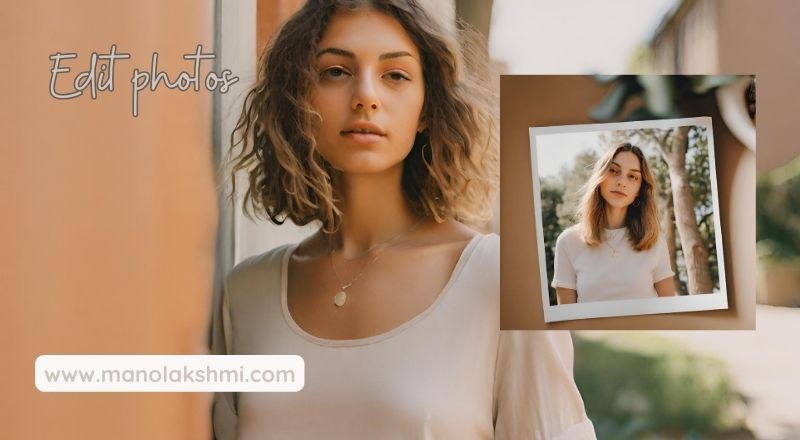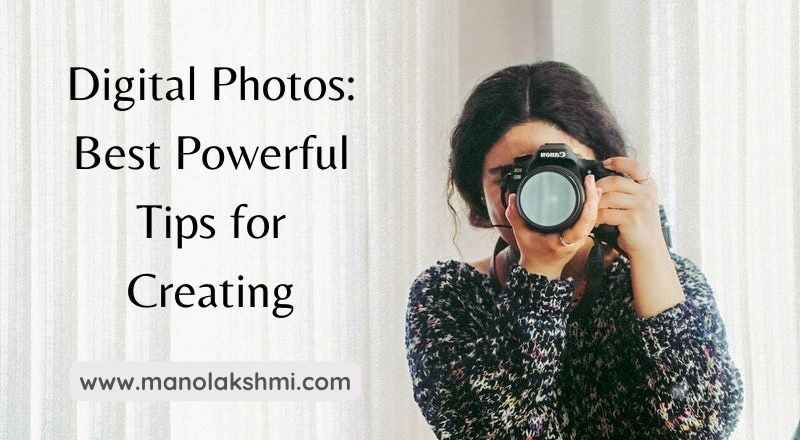What are Digital photos?
Digital photos are images that are captured and stored in a digital format, as opposed to traditional film photographs. Digital photos are typically stored on a memory card or hard drive, and can be viewed on a computer or other digital device.
There are many advantages to digital photography over traditional film photography. First, digital photos are much more convenient to store and share. They can be easily emailed, uploaded to social media, or printed out at home. Second, digital photos are much more forgiving than film photographs. If you make a mistake while taking a digital photo, you can simply delete it and take another one. Third, digital photos offer a wider range of possibilities for editing and enhancement. You can use photo editing software to adjust the color, contrast, and brightness of your photos, and even add special effects.
Of course, there are also some disadvantages to digital photography. First, digital cameras can be more expensive than film cameras. Second, digital photos can take up a lot of storage space. Third, digital photos can be easily lost or damaged if not backed up properly.
Overall, digital photography is a great option for anyone who wants to take high-quality photos without the hassle of film photography. Digital photos are convenient, forgiving, and offer a wide range of possibilities for editing and enhancement.
Use natural light:
Natural light plays a crucial role in determining the quality of your digital photographs. To capture the most flattering and soft light, shoot during the golden hour – the first and last hour of sunlight each day.

During the golden hour, the light is much softer and warmer than during other times of the day. This makes it perfect for capturing portraits, landscapes, and other types of photographs.
Plan ahead: Since the golden hour only lasts for a short time each day, it’s important to plan your shoot ahead of time. Check the weather forecast and plan your location and subject accordingly.
Use a tripod: Shooting during the golden hour usually means using a slower shutter speed, especially if you’re shooting in low light. Maximizing Photo Clarity with a Tripod For crisp and clear photos. It is recommended to use a tripod which can keep your camera steady and prevent blurry images.
Experiment with different angles: During the golden hour, the light is coming from a lower angle than during the day. This means that you may be able to get some interesting shots by shooting from a lower angle or from behind your subject.
Don’t forget about post-processing: Even if you get the perfect shot during the golden hour, you may still want to do some post-processing to enhance the colors and contrast in your photo.
By taking advantage of the golden hour, you can capture stunning photographs that are sure to impress.
Seek interesting perspectives:
Consider shooting from different angles and elevations to capture unique and visually stimulating perspectives. Experiment with low angles, high angles, and different vantage points to add interest to your photos.

Play with perspective: Perspective can greatly affect the mood and composition of your photos. Try shooting from unusual angles, such as lying on the ground and shooting upwards, or standing on a chair and shooting downwards. This can add a unique and creative element to your photos.
Use leading lines: Leading lines are a great way to guide the viewer’s eye through your photo and create depth. Look for natural lines in your surroundings, such as roads, bridges, or buildings, and use them to create a dynamic composition.
Experiment with lighting: Lighting is a key element in photography and can greatly affect the mood and tone of your photos. Try shooting during golden hour, which is the hour after sunrise or before sunset when the light is soft and warm. You can also experiment with backlighting, silhouettes, and shadows to add drama and interest to your photos.
Use props and accessories: Incorporating props or accessories into your photos can add a fun and playful element. For example, you can use flowers, hats, or other objects to create a whimsical and creative photo.
Don’t be afraid to edit: Editing is an important part of the photography process and can help enhance your photos. Use editing software to adjust the brightness, contrast, and color balance of your photos to achieve the desired effect.
Always be careful not to over-edit your images, as this can make them look unnatural.
Pay attention to the background:
Take the time to consider the background of your photos and ensure that it doesn’t distract from your main subject. Look for clean and uncluttered backgrounds to make your subject stand out.
To further enhance the impact of your photos, here are some additional tips to consider:

Create an enchanting composition by dividing your photo into thirds both horizontally and vertically. Place your subject at one of the intersections of these lines to generate an even and captivating photo. Try different angles to add depth and interest to your pictures.
Try taking photos from a low or high angle, or from a unique perspective to create a new and exciting point of view.
Pay attention to lighting and how it affects the mood and tone of your photos. Natural light is often the best option for creating a soft and flattering look, but don’t be afraid to experiment with artificial lighting to create a more dramatic effect.
Consider the use of props or other elements to add interest and context to your photos. A well-placed flower or piece of fruit can add color and texture, while a thoughtful background element can provide additional context and meaning to your subject.
Finally, don’t be afraid to edit your photos to enhance their impact. Simple adjustments such as brightness and contrast can make a big difference, while more advanced editing techniques can take your photos to the next level. Just remember to keep your edits subtle and natural-looking to avoid an artificial or over-processed look.
Edit with care:
While digital editing can help enhance your photos, it’s important not to overdo it. Make subtle adjustments to exposure, contrast, and color to improve your photos without making them look overly processed.
Digital editing has become an integral part of modern-day photography, and it’s essential to use it wisely to enhance the visual appeal of your images. However, over-editing can lead to unnatural and unrealistic results, which can be a turn-off for viewers. Here are some tips to help you make subtle yet impactful adjustments to your photos:

Start with a high-quality image: No amount of editing can fix a poorly captured image. Therefore, it’s crucial to start with a high-quality photo that has good lighting, focus, and composition.
Adjust exposure: Exposure refers to the brightness and darkness of your image. Adjusting it can help bring out the details and colors in your photo. However, be careful not to overdo it, as it can lead to blown-out highlights or underexposed shadows.
Play with contrast: Contrast is the difference between the light and dark areas in your image. Increasing it can make your photo look more vibrant and dynamic while decreasing it can create a softer, dreamier effect.
Use color correction: Color correction can help adjust the hue, saturation, and temperature of your image, making it look more natural and pleasing to the eye. However, be careful not to over saturate or desaturate the colors, as it can make your photo look artificial.
Crop and straighten: Cropping can help remove distracting elements from your photo while straightening can help correct any tilted horizons or angles.
Remember, the goal of editing is to enhance your photo, not to completely transform it. Make subtle adjustments that complement the original image and bring out its best features.
Read more: Green tea: Why is everyone talking about Green tea
Invest in quality gear:
While you don’t need the most expensive camera to take great digital photos, investing in a quality camera and lenses can make a significant difference in the clarity and sharpness of your images.
Investing in a quality camera and lenses is a wise decision for photography enthusiasts who want to capture stunning and high-quality images.

Higher resolution: A quality camera will have a higher resolution sensor, allowing you to capture more detail and produce sharper images.
Better low-light performance: Expensive cameras typically have larger sensors and lenses, which allow them to capture more light. This results in better performance in low-light conditions, producing images with less noise and better clarity.
More manual controls: Quality cameras often come with more manual controls, allowing you to take more control over the settings of your photos. This can help you to achieve the exact look you want for your images.
Higher durability: A quality camera is built to last. They are typically made with better materials and are more resistant to wear and tear. This means that you won’t have to replace your camera as often, saving you money in the long run.
Better lens options: Investing in quality lenses will allow you to capture sharper images with better contrast and color. Different lenses also allow you to experiment with different types of photography, such as macro, portrait, or landscape.
While a quality camera and lenses may be more expensive upfront. They can make a significant difference in the quality of your images. Consider investing in a quality camera if you’re serious about photography and want to take your skills to the next level.
Tell a story:
Consider the narrative you want to convey with your photos. Whether it’s capturing a candid moment or creating a visual story, think about how you can use your photos to evoke emotions and tell a compelling story.
To help you convey the narrative you want with your photos, here are some tips to keep in mind:

Consider the setting: The environment in which you take your photos can greatly affect the mood and tone of your images. Think about how the location you choose can support the story you want to tell.
Pay attention to lighting: Lighting plays a crucial role in photography, as it can drastically change the look and feel of your images. Experiment with different lighting conditions to create the mood you want.
Use composition to your advantage: The way you compose your photos can also help you convey your narrative. Consider the rule of thirds, leading lines, and other compositional techniques to guide the viewer’s eye and communicate your message.
Include human elements: Including people in your photos can add depth and emotion to your narrative. Whether it’s capturing a candid moment or posing your subjects, think about how people can help you tell your story.
Edit with purpose: Editing your photos can help you fine-tune your narrative and create a consistent look and feel. Be intentional with your editing choices and consider how they support your story.
By keeping these tips in mind, you can create photos that not only look beautiful but also tell a compelling story. Remember to experiment and have fun with your photography, and don’t be afraid to take risks and try new things.
